100 Earth Facts: A Scientific List of Facts About Earth
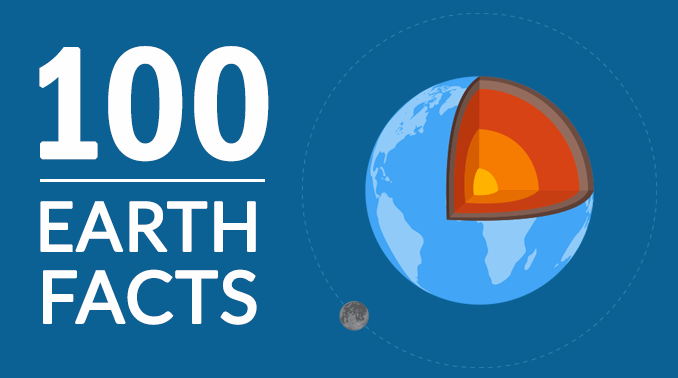
100 Facts About the Earth
Earth needs no introduction.
From its origin to its inevitable future, the story of Earth is the greatest story ever told.
So if you’re looking to boost your knowledge of our planet…
You’ll really enjoy this list of 100 Earth facts.
Let’s get started.
1. The Big Bang created all matter in the universe
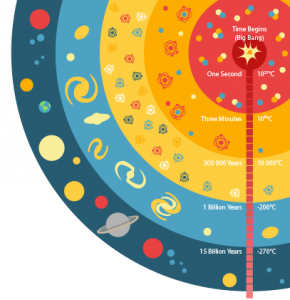
Ready? Start your stopwatch. In just a fraction of a second, all matter in the universe was created from the Big Bang.
The physics we use do not apply to the creation of the universe. From the initial phases of the Big Bang, the universe now holds a mammoth collection of galaxies, stars, planets, and other solar remnants.
We know this because we observe them using the Kepler and Hubble Telescopes. On the grand scale of things, Earth is tiny in comparison.
2. The universe is expanding into the unknown
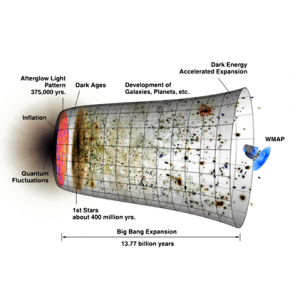
The universe is immeasurable in size. And for all we know, the universe is expanding indefinitely into limitless bounds.
We know the universe is still expanding because we measure the redshift of light. Redshift means that light stretches when objects move away from you.
Alternatively, it’s blue shift when moving toward. It’s like the Doppler Effect which uses sound waves, but redshift uses light.
3. Welcome to the Milky Way Galaxy
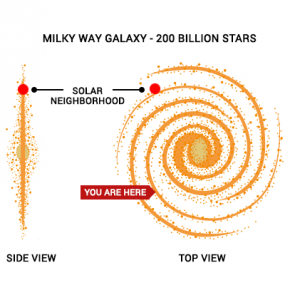
Earth belongs to the Milky Way galaxy. It’s home to over 200 billion stars and ours is the Sun. A supermassive black hole is at the galactic center.
Galaxies are flat because things that rotate flatten out on the rotational access. For example, Earth is longer at the equator axis because of its rotation.
Galaxies are also rotating around some point in space. This is likely where the Big Bang occurred.
4. Gravity sculpts solar systems
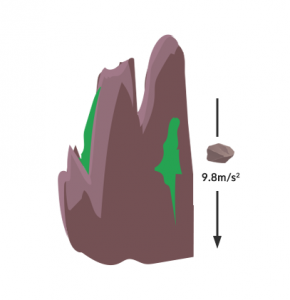
What brings order to Earth is gravity. Gravity is always at work. Not only did gravity sculpt our universe, but it’s also why rocks fall downhill.
Gravity is the constructor of our planet 4.6 billion years ago. Depending on where you are on Earth, gravity varies.
For example, gravity is 9.764 m/s2 in Peru and 9.834 m/s2 in the Arctic. This is because mass (like mountains) and the bulge at the equator amplifies it.
5. Constructing a planet
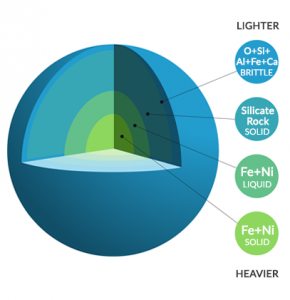
The core accretion model describes the creation of our planet and solar system. Solar wind swept in hydrogen and helium closer to the sun because these particles were smaller in size.
But the sun couldn’t pull in heavier elements because of their mass. They spiraled and gelled together into planets of their own. Earth coalesced to form spheres of its own. The heaviest material like iron and zinc sank to the core.
Finally, lighter material remained on top to form a crust. The two opposing forces of Jupiter and the sun counteracted each other stabilizing the terrestrial planets and an asteroid belt between them.
6. Third rock from the sun
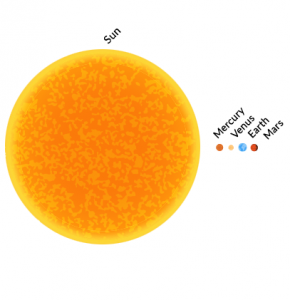
Earth lands in the third spot from the sun. Fusion reactions power the sun. By fusing hydrogen with helium, the sun releases vast amounts of energy toward Earth.
It takes light 8 minutes and 20 seconds (1 astronomical unit) to reach us. Earth is the only planet known to harbor life because of the healthy portion of UV rays that heats it.
Earth has had 2 major phases. A brief period of heating up from the “heavy bombardment stage”. And everything since which cooled the Earth. The early stage was fast and catastrophic with tons of impacts and tremendous heating.
7. Earth is a red marble
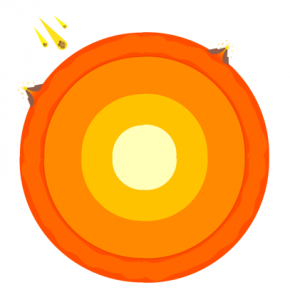
If you lived on Earth 4 billion years ago, it would have looked like a completely different planet. Earth was in a molten state. Rivers of lava flowed with scorching hot temperatures.
Earth spun with incredibly high velocity, nearly 3 times as fast as it did today. Like a scene from a Michael Bay movie, meteors and asteroids pelted Earth for millions of years.
This violent era was the late heavy bombardment stage – a sight unseen from the human eye. From red to the blue marble, it was the dawn of a new age because of the formation of the moon.
8. Clues to our origin
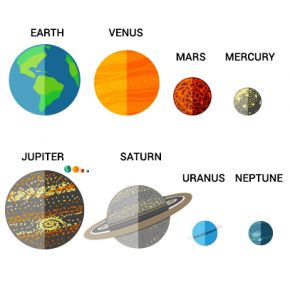
How do we know the late heavy bombardment stage was a violent time in Earth’s history? Earth has erased all the evidence of any impacts because plate tectonics destroy, create and recycle rocks.
This is why gaze toward the moon. Because plate tectonics don’t exist on the moon, the impacts from this violent period are still visible as craters. There are other clues about the formation of our solar system.
For example, we probe orbiting comets to study the origin of water. Finally, we explore Mars to delve into the necessary conditions for life to exist in the universe.
9. Earth’s interior has layers
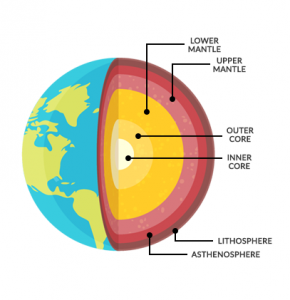
The Earth is separated by distinct layers with a core, mantle and crust. Imagine Earth as a chocolate-covered cherry.
The core (2,890-6,360 km) of Earth is like the pit of a cherry because it’s solid. The mantle (35-2,890 km) is like the cherry which is mostly solid and behaves like a viscous fluid.
Finally, the crust (0-35 km) is the outermost shell. It’s rigid because lighter material remained at the surface. But the heavier material like iron and zinc sank to the core.
10. We use earthquakes to peek into Earth’s core
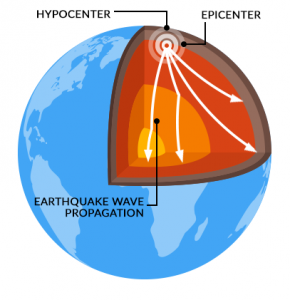
The ground-rattling tremors of an earthquake generates unimaginable amounts of energy. During an earthquake, a break occurs on a fault. This is the driving force that generates seismic waves which pulse through the crust and mantle.
Depending on the type of rock, waves either speed up or slow down. If the rock is cold, waves travel quickly. But if rocks are hot, waves travel slowly.
From seismic stations around the world, we listen to the ground shaking like a tape recorder. From these tomography readings, we produce 3D models of the Earth’s interior.
11. Earth meet moon
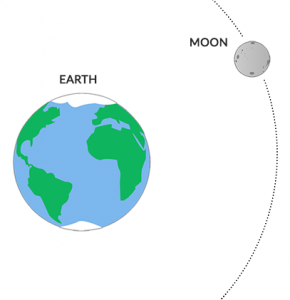
The moon has been a close companion for as long as Earth’s formation. The early Earth spun so fast that a day lasted just 6 hours.
After the moon collided with Earth, it tilted it on its axis giving seasons. In tandem, they control tides, slow rotational speed, and stabilize Earth from wobbling.
There’s just one moon that orbits Earth. But if you stepped foot on Jupiter, you would see 63!
12. The 4 seasons
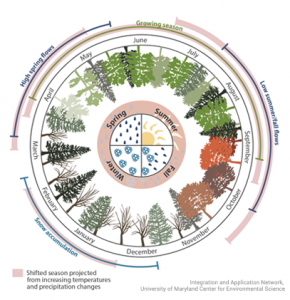
The formation of the moon had profound effects on balancing Earth’s climate. Not only did the moon slow down Earth’s rotation, but the impact tilted Earth on its axis.
This collision promptly delivered seasons to Earth. If it wasn’t for the moon, Earth’s climate would be unpredictable and have wild shifts.
This is because the gravitational pull of the moon has a stabilizing effect on Earth preventing it from wobbling like a top.
13. Earth’s poles are north and south
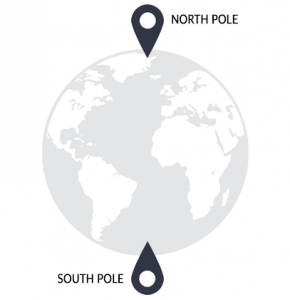
If you stick a pencil directly through the Earth at the point of rotation, these two points are the North and South poles. Geographically speaking, it’s where lines of longitude meet.
If you were to travel to the North Pole, it’s nearly impossible to install a physical marker there. This is because the North Pole is covered by moving ice in the Arctic Ocean.
But the South Pole is currently positioned on the continental landmass of Antarctica. Even though Antarctica moves only a few meters a year, we have marked the true South with a permanent marker station.
14. Earth is the densest planet
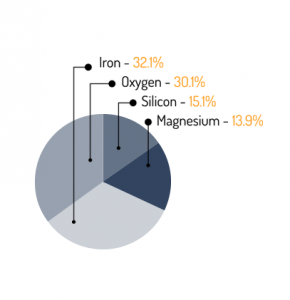
Terrestrial planets tend to be rich in metals and silicate rocks. Earth is the largest and densest of all terrestrial planets. If you crunch the numbers, Earth is jam-packed with mostly iron (35%), oxygen (30%), silicon (15%) and magnesium (13%).
Finally, nickel (2%), sulfur (2%), calcium (1%), and aluminum (1%) make up most of the rest. In terms of mass, gas giants like Jupiter dwarf Earth.
The colossal heavyweight Jupiter’s radius is nearly 70,000 km compared to Earth’s measly 6,371 km.
15. Our magnetic field
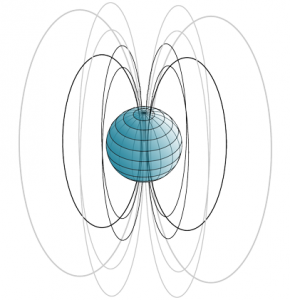
Earth’s magnetosphere stretches tens of thousands of kilometers in space. Like a force field, it protects us with a never-ending stream of charged particles.
Inside Earth, the solid core heats the outer liquid layer. As a result, this produces a geodynamo and convection currents which is our magnetic field.
Without a magnetic field, our skin would be unguarded from harmful radiation. Also, solar flares from the sun would constantly cut off our communication systems.
16. A healthy dose of solar radiation
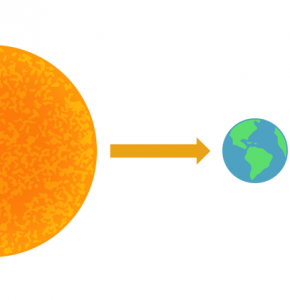
Our sun is 99% of the total mass of the solar system. It’s this solar energy that heats the Earth. The balance of Earth’s temperature relies on how much energy enters and leaves the planet’s system.
When incoming energy from the sun is absorbed by the Earth system, Earth warms. When the sun’s energy is reflected back into space, Earth avoids warming.
When absorbed energy is released back into space, Earth cools. Natural and human causes can influence Earth’s energy balance.
17. Earth is in the Goldilocks zone
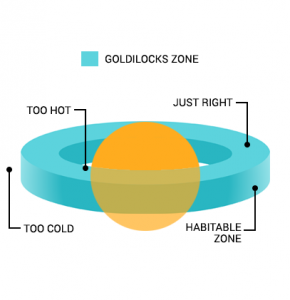
Lucky for us, Earth is in the Goldilocks zone. This means that it’s within the range where liquid water can persist.
In other words, because Earth receives a hearty portion of the sun’s rays (1 astronomical unit), it can sustain life. Even here in our Milky Way galaxy, at least 10 possible habitable planets are within the Goldilocks zone.
This means that only light years away, there is a glimmer of hope that other life exists.
18. Nitrogen outnumbers oxygen 3 to 1
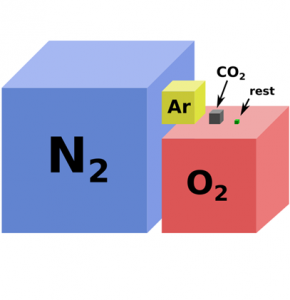
Earth possesses a massive supply of nitrogen in its atmosphere. By far, it’s the largest outnumbering oxygen and carbon.
Why so much nitrogen? Simply, it’s just because it’s what was here when the Earth formed. But only is there a sizable amount of nitrogen in the atmosphere, but it’s entangled in our soil fertilizing plants.
Earth’s atmosphere composition largely consists of nitrogen, oxygen, argon, carbon dioxide, and water vapor.
19. Our changing atmosphere
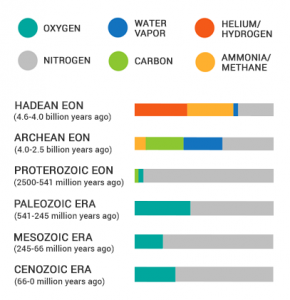
Earth’s early atmosphere was filled with methane and ammonia. CO2 played a dominant role early in Earth’s history.
But after oxygen filled the air, it created a habitable planet. Since early Earth, oxygen levels have changed significantly.
For example, free oxygen levels peaked just before the age of dinosaurs. Now, Earth’s blue skies are picturesque. We have oxygen to thank for its impeccable beauty.
20. Our first oceans
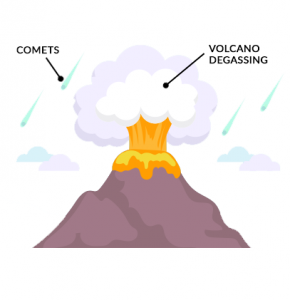
In the case of our first oceans, the simplest explanation is often the best. That is, water existed all along in rocks inside the crust.
Because Earth’s interior contains minerals with hydrogen and oxygen, volcanoes continually “degassed” releasing H2O as water vapor. If it weren’t for the process of degassing our planet through volcanoes, we wouldn’t have any air to breathe.
Volcanoes erupt and lava spews out, but it also ejects gas into the atmosphere.
21. One full rotation takes 24 hours
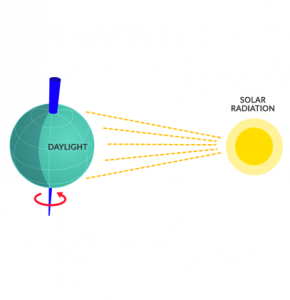
A full day on Earth is clocked at 23h 56 min 4sec. In order to make a complete rotation in this amount of time, Earth travels at 1000 miles per hour (1600 km/hr).
That makes Earth’s rotation faster than a bullet train but not a speeding bullet. But our bodies are so used if to it that we don’t feel its speed. Earth’s rotation is a pace-setter for our sleep patterns.
If you shine a flashlight on a spinning top, the side lit up is daytime. The dark side is night-time. That’s how our day-night cycles work with the sun as our flashlight.
22. Earth is not a perfect sphere

Earth is an oblate spheroid shape. But it’s nowhere close to being flat.
As the Earth spins on its axis, it flattens at the poles and widens at the equator. Sir Isaac Newton proposed that the centrifugal force causes the planet to bulge at the equator and somewhat squash at the poles.
This is why geographers model the Earth as an ellipsoid, which is a sphere slightly flattened at the poles.
23. Ocean tides and the moon
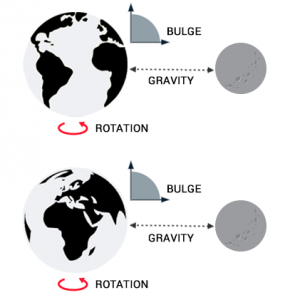
It’s not only rotation that causes Earth to flatten at the poles, but it’s also from the moon’s gravitational pull. Because the moon is close to the Earth, it stretches the planet where it’s facing.
When the Earth rotates, the bulge shifts on both sides of the planet according to the position of the moon. In full swing, this causes sea levels to rise and fall which are ocean tides.
The sun has a lesser effect than the moon. Even though the moon is smaller, the moon is closer. So this means that its pull is stronger than the sun.
24. Radioactive isotopes put Earth on a light simmer
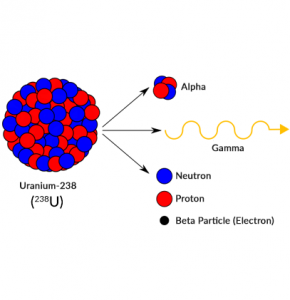
Four isotopes inside Earth put it on a light simmer. Like a slow cooker, they constantly generate heat within the planet keeping it on a light boil.
These four isotopes are uranium-238 (238U), uranium-235 (235U), thorium-232 (232Th), and potassium-40 (40K). Each number in these radioactive isotopes corresponds to the number of protons and neutrons in its nucleus.
Because of these 4 isotopes, Earth is geologically active and maintains a cozy temperature. The majority of heat transfer is from mid-oceanic ridges and the least is from continental interiors.
25. Heat transfer from convection cycles
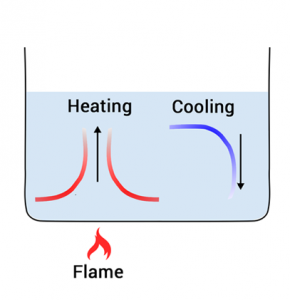
Imagine you are boiling water in a pot. If you boil one side of the pot, it warms up where the flame is. When hot water spreads out, it mixes with the cold water.
Eventually, this movement of hot to cold creates a circular motion which is the convection cycle.
Beneath the crust, the convection cycle occurs in the mantle. Because the plastic-like “asthenosphere” acts as a liquid, it makes the convection cycle possible.
26. The lithosphere rides on the asthenosphere
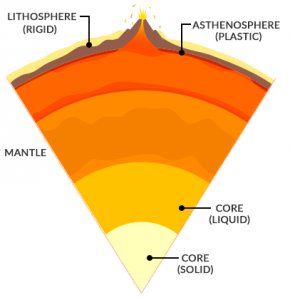
The lithosphere sits on a plasticky layer called the asthenosphere. Because of its buoyancy, the lighter rock floats on it. It spans 80-200 km beneath the surface.
Soon after a dramatic period of Earth heating, the Earth started to cool down. This was when the solid lithosphere layer began to form as continents began to rise up out of the mantle.
The asthenosphere is the untold story of how its fluidity facilitates plate tectonics.
27. Plate tectonics create new rock
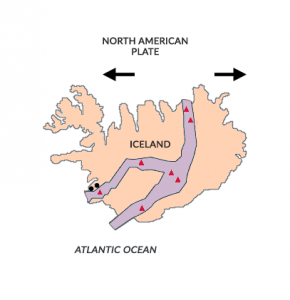
Inch by inch, the Earth beneath our feet is moving. But it’s so slow that we don’t even notice it. However, GPS can measure their movements.
Like a giant conveyor belt, one end of a plate is sinking into the Earth transporting whatever is on top of it. At the opposite end, new rock rises from the mantle.
Plate tectonics is the mechanism that recycles Earth’s lithosphere. This breakthrough discovery transformed geology as we know it.
28. Building mountains and orogenies

Plate tectonics are deceptively slow. But they’re never idle. When convergent plates collide, plates thrust upwards to build mountains.
This geologic process of vertical upheaving is the orogenies or mountain building events. Since the beginning of Earth, plate tectonics have carved out chains of mountains that have reshaped the landscape inside and out.
While young rock appear and disappear, cratons are stable pieces of the continent that have lasted over 1 billion years old.
29. Tearing down mountains
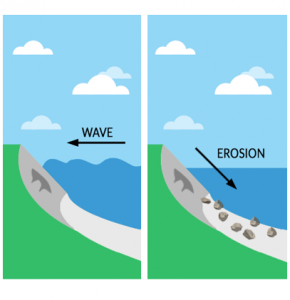
From the remarkable process of plates colliding to build mountains. They are only to be dismantled by the process of weathering, erosion and transport.
By mostly water, wind, and ice, mass wasting is the removal of rock due to erosion. Then, it involves the transport of sediments downhill due to gravity.
Currently, Mount Everest is thrusting upwards faster than it being eroded away. But in hundreds of millions of years time, erosion could take its toll shortening it by millimeters each year.
30. A breath of fresh air
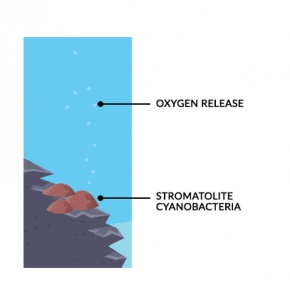
There wasn’t always a breath of fresh air on Earth. Methane and nitrogen choked any potential life in Earth’s early atmosphere. But this doesn’t mean that life didn’t exist.
Long ago, tiny, microscopic cyanobacteria flourished in ocean environments. They evolved to carry out photosynthesis anaerobically. The key to their existence was that they didn’t need oxygen to survive.
As a by-product, cyanobacteria released oxygen which was toxic for them. As oxygen filled the oceans and then the atmosphere, this event was the great oxygenation event. This paved the way for aerobic organisms to carry the torch.
31. A struggle for constant oxygen
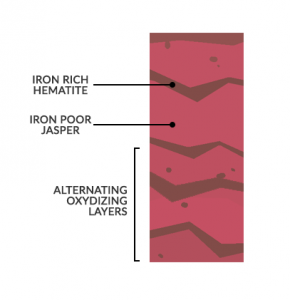
About 3.5 billion years ago, life existed without photosynthesis. Cyanobacteria used heat from volcanoes or mid-ocean ridges, then released oxygen into the oceans and air.
Because iron rusts when it reacts with oxygen, these layers were red. So the red (oxidized) layers mark a time when there was oxygen. The alternating layers in Banded Iron Formations (BIF) consist of red minerals (oxidized) and (unoxidized) black iron.
These remarkable formations give a sneak peek of how oxygenation was just starting to get a foothold in this geologic period.
32. An ozone layer like sunscreen
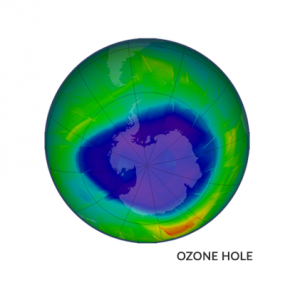
The ozone layer shields us from harmful UV rays like sunscreen. The thickness of the ozone layer varies worldwide and by season.
Ozone ranges from 6 to 10 kilometers in the stratosphere. Cross the line, and suddenly there’s less as you go upwards. Ozone is good up high, bad down low.
This colorless gas is made up of three oxygen atoms. It’s the first line of defense that arms us against ultraviolet rays. If you strip Earth of its ozone, you strip it from most life forms.
33. A nearly closed system
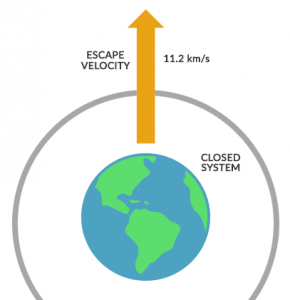
The escape velocity of Earth is the speed at which an object must travel to break free of a planet’s gravitational pull into space. Like a mason jar, Earth is nearly a closed system.
We lose some hydrogen from the atmosphere due to its escape velocity. And we get the occasional meteor strike.
But in general, Earth is a closed system because it doesn’t exchange matter from or to the outside. Earth exchanges energy due to incoming solar radiation but little matter leaves or enters.
34. The rock cycle recycles the crust

If you could speed up time, you would see rocks continuously cycling from the surface down into the deep interior of the planet and back up again.
Like a well-oiled machine, rocks transform from igneous, sedimentary to metamorphic over long periods of time.
This process where rocks are created, altered and formed again is the rock cycle.
35. Volcanoes form igneous rocks
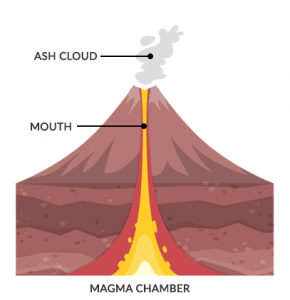
Volcanoes are the foundation for igneous rocks. Like a bottle of champagne with a cork in it, liquid rock pools in the magma chamber.
Once you pull the cork, the volcano erupts from the mouth spewing lava. Like wax dripping down the side of a candle, igneous rocks form.
So hot lava drips on the side of volcanoes then cools, hardens and become igneous rocks like granite and feldspar. Without igneous rocks, there wouldn’t be the rock cycle.
36. Metamorphic rocks from pressure

Metamorphic rocks change in form from pre-existing rocks. For example, a rock that was once made of sand is changed or “metamorphosed” into another type of rock from heat and pressure.
When it’s metamorphosed, it’s soft and pliable like cookie dough. This intense pressure for metamorphic rocks comes from inside Earth.
Earth’s major mountain chains contain metamorphic rocks because it’s at plate tectonics boundaries where this intense pressure exists.
37. Sedimentary rocks from compacted sediments

Sedimentary rocks like shale, limestone, and sandstone form from pre-existing rocks. If you start with sand, mud or organic material, these sediment deposits get eroded and transported over time.
This happens because shorelines move back and forth compacting material below like a steam roller. The new layers of sedimentary rock are on top and the older layers are on the bottom.
Like glue, each successive layer cement over tens of millions of years. For example, the Grand Canyon has stacks upon stacks of sedimentary rocks dating back to 2 billion years ago.
38. The youngest rock is the oceanic crust
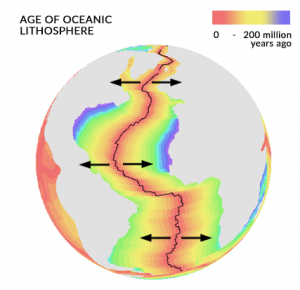
Hidden beneath Earth’s oceans, underwater volcanoes spew out lava at mid-oceanic ridges (rift valleys). Because divergent plates move apart from each other at these mid-oceanic ridges, magma flows upwards from the mantle beneath.
When the lava hardens, it becomes dark igneous rock “basalt” at rift volcanoes. Because divergent plates fill in the gaps with basalt, oceanic crust is young geologically.
Over time, the plates grow at oceanic crust and older rock is pushed away from mid-oceanic ridges.
39. Earth’s most prominent feature is hidden beneath the ocean
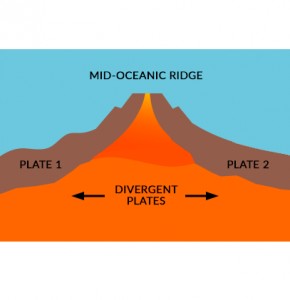
If we removed all oceans in the world, Earth’s most prominent feature would be its underwater mountain chains. There are over 70,000 kilometers of mountains hidden at the bottom of our oceans.
These occur at divergent plates where plates move away from each other. On the flip side, trenches form where plates move toward each other.
For example, the Mariana Trench is the deepest natural point in the world. This is due to the subduction that occurs at two convergent plates.
40. LUCA is the one common descendant
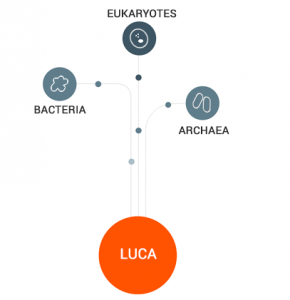
All living things originated from a common ancestor called the Last Universal Common Ancestor (LUCA).
Around 4 billion years ago, two unicellular groups existed as bacteria and archaea. Scientists have found that certain protein families likely descended from the organism.
LUCA was found to withstand hot temperatures. This means they likely thrived in an iron-sulfur-rich lifestyle like deep-sea hydrothermal vents.
41. Your identity is in the genes

Just think about it. Your very own identity is decided by combinations of 4 letters of DNA (A, T, G, and C). There’s so much DNA in your body that it can stretch all the way to the moon.
The truth is: We don’t know the origin of DNA. And we don’t even know if RNA came before. In primordial soup, this is where organic compounds and amino acids had the right conditions to synthesize from inorganic matter.
In hydrothermal vents beneath the ocean floor, this is where it’s believed to have the necessary building blocks for life.
42. Complex life from endosymbiosis
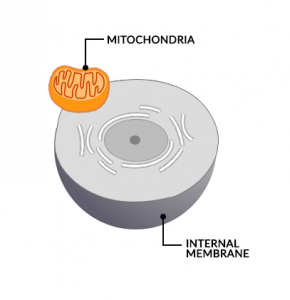
Endosymbiosis is the origin of complex life on Earth. It’s the idea that prokaryotic cells become eukaryotic from a symbiotic encounter. It starts with a mitochondrion latching onto a prokaryote.
In turn, the mitochondrion leverages the nutrient-rich surroundings of the prokaryote. And in return, the prokaryote energizes from the mitochondria during its residence. As both symbiotically gain from the encounter, they asexually multiply and evolve in this configuration.
In conclusion, mitochondria once lived free but are now part of complex cells through endosymbiosis.
43. Cambrian explosion and life diversification

The Cambrian explosion was the largest diversification of life in Earth’s history. In this remarkable evolutionary event, new life started in the ocean then moved to land.
This was the first time in geologic history that we could identify life from fossilized animals. Everything else before this era was Precambrian without hard body parts.
The Cambrian explosion was the roots of life that sparked a colossal amount of diversity in oceans and land.
44. Fossil records are like frozen photographs
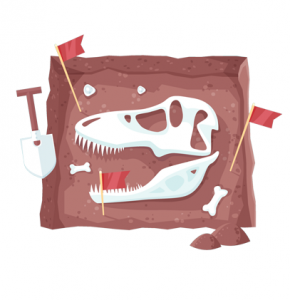
Fossils are preserved remains from past living things such as bones, shells or exoskeletons. When you unveil a fossil, it’s like a spyglass into the past.
Every fossil was living before our time untouched for centuries. Like frozen photographs in the past, we piece together the geologic past with fossils.
Every fossil is like a puzzle piece that we link to the evolution of life. By examining a simple imprint in rock, we understand ancient supercontinents and continental drift.
45. Fossils don’t exist in 88% of Earth’s history
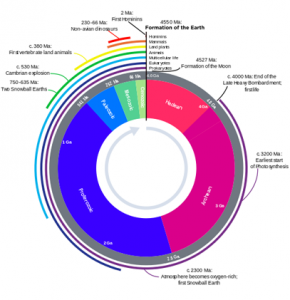
Only primitive life forms like bacteria and archaea lived on early Earth. It wasn’t until the Cambrian explosion that complex life finally began to thrive.
This marked a time when a wide array of life forms evolved. For example, we’ve uncovered fossils with shells or exoskeletons during this era.
This means that if you look at Earth’s geological timeline, complex life did not exist for more than 88% of it.
46. Water covers 70% of the planet
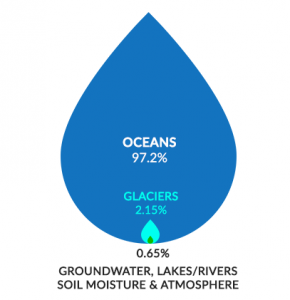
Earth is nicknamed the blue marble because water covers 70% of it. The vast majority of water is in our oceans.
While 3% is freshwater, 97% is salted. Of the 3% freshwater, most are locked in glaciers in the polar regions or groundwater.
Water is essential for us because it drives the hydrologic cycle, weather patterns, and all life on Earth.
47. Water changes states from gas, liquid and water
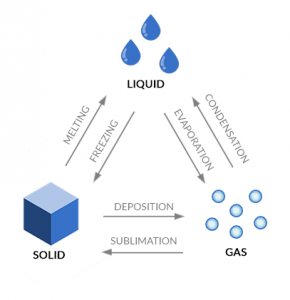
Because water is extremely versatile, it can transform phases from a gas, liquid and solid.
We have so much water on the surface that it’s incorporated in the water cycle, weather, and biology. From a liquid state, water evaporates into a gas or freezes into ice.
Like water dripping down a chilled glass of water, condensation goes from a gas to a liquid state. Finally, melting is when the sun beams down on ice converting it to a liquid.
48. Water is on the move in the hydrological cycle
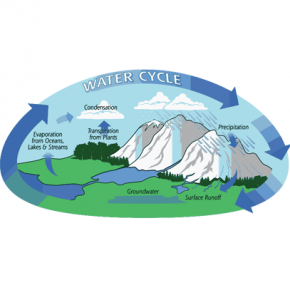
From reservoirs to the air and back to surface water again. Water is always in motion. It’s the hydrologic cycle that describes how water moves on, above and below the surface.
And it’s all driven by the sun’s energy. The main focus is how water is stored – in the atmosphere, glaciers, oceans, plants and humans.
Most evaporation takes place in oceans. It’s the Coriolis Effect that moves it.
49. The Coriolis Effect drives air circulation
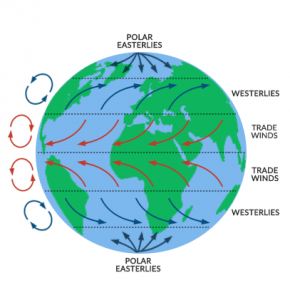
When a pocket of air heats up, it causes that hot air to rise. Other air rushes into the space to replace the risen hot air.
This phenomenon is “wind”. If Earth didn’t rotate, warm air at the equator would simply transfer to the poles. But because the Earth rotates, air starts to swirl like a merry-go-round.
This is the Coriolis Effect that causes storms to veer counter-clockwise in the northern hemisphere and clockwise in the southern hemisphere.
50. A weather-driven atmosphere
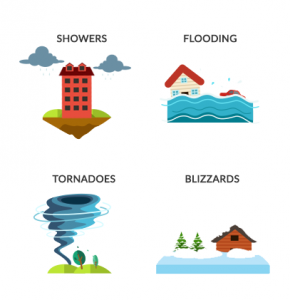
Weather patterns have tremendous impacts on people and ecosystems on Earth. Clouds are like floating reservoirs of water.
Like squeezing a sponge, it redistributes water in the form of rain, sleet, and snow. This has influenced migration patterns and the type of vegetation that grows.
One billion tons of water falls every minute on Earth. Severe weather like tornadoes, hurricanes and flooding have displaced people from homes costing billions in damage.
51. A layered atmosphere
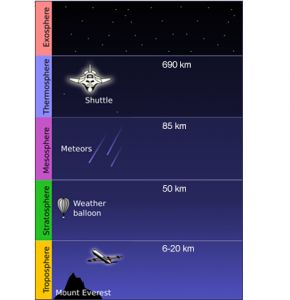
We categorize the atmosphere as separate layers. Air thins out as you go up in space.
In general, the atmosphere is thickest closer to the surface. If you go upwards of 5,500 meters, air pressure is half that at sea level. So this means you have to breathe about twice as much to get the same amount of oxygen. We live in the troposphere where all weather occurs.
Next, the jet stream and airplanes fly in the stratosphere at 12-50 km altitude. The mesosphere is the coldest layer extending from 50-85 km upwards. Finally, the thermosphere is where UV radiation heats up.
52. Groundwater as a hidden freshwater supply

Despite the popular belief that groundwater exists as a huge lake underground, water actually exists in tiny pore spaces within rocks and soil.
Groundwater has more than 100 times the amount of freshwater than lakes and streams combined. Groundwater is hard to get out of the ground, slow to recharge, and is easily contaminated.
That’s why groundwater is a delicate resource that we use as a rainy-day fund and draw in times of need. Pardon the pun.
53. Ocean currents push water across the globe
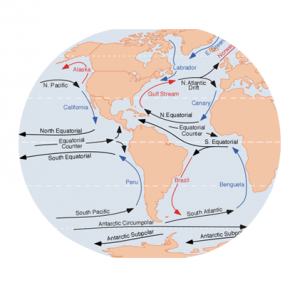
Ocean circulation currents are like a global conveyor belt exchanging warm and cool waters. At the equator, the sun is strongest heating water mostly there.
From the equator, hot water pushes outward to the south and north pole. At the same time, cold water from the north and south poles collide with this warm water. Because the Earth is rotating, water flows in a circular pattern.
This is why ocean currents move clockwise in the northern hemisphere and counter-clockwise in the southern hemisphere. While wind drives surface ocean currents, temperature and salt gradients mostly influence deep ocean currents.
54. Earth’s background noise

Even without earthquakes, seismometers constantly record seismic energy. It records periods of oscillations about every 6 seconds as background noise.
These oscillations are due to ocean waves constantly crashing into continents. Earth’s constant hum is because masses shake back and forth like a metronome.
And during storms, it worsens as the reverberations are amplified.
55. Photosynthesis and food synthesis
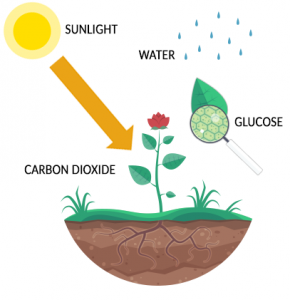
The main idea of photosynthesis is that it takes in carbon dioxide and uses that carbon with water to convert it into a chemical form like glucose. Without light, you cut the plant off from the energy needed to produce photosynthesis.
Without water or CO2, you choke the plant from the essential building blocks that are the plant’s structure. So water is H2O which provides oxygen and hydrogen. Carbon dioxide is CO2 which provides carbon and oxygen.
The plants use solar energy to break apart the carbon dioxide in the air, and use the carbon for plant material in turn releasing the oxygen. This cycle is the short-term carbon cycle.
56. The short-term carbon cycle
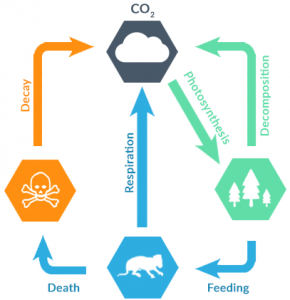
In the short-term carbon cycle, carbon is always in flux. It cycles through the environment in various forms. From the small amount of carbon dioxide in the air, plants and algae convert it to food using water and light.
In turn, this produces O2 back into the air. Carbon fuels all living things. For example, animals consume food for energy using O2 and giving off CO2.
Then, it goes back again through the same process again. So the short-term carbon cycle describes how carbon goes from an inorganic compound like CO2 into an organic compound like C6H12O6.
57. The long-term carbon cycle
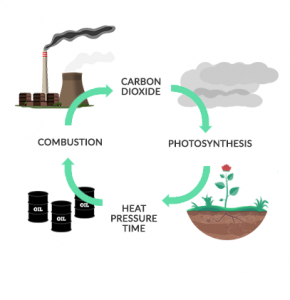
Carbon is in motion again in the long-term carbon cycle. But the distinction between the short-term carbon cycle is that this cycle takes millions of years to come full circle.
Instead of carbon converting into sugars, carbon is re-purposed into fossil fuels like coal. When plants are buried and compacted over millions of years, they become hydrocarbons.
When you drive your gas-powered car, you tap into Earth’s carbon reserves deposited hundreds of million years ago.
58. Coal reserves from buried plants
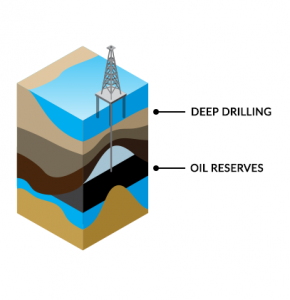
The Carboniferous period laid down gigatons of hydrocarbons. When plants were compacted and buried for millions of years, they couldn’t decompose naturally. Eventually, they became methane, coal and oil reserves all stored underground.
As we unlock these reserves, they hold incalculable worth. We harness their power and release it into the atmosphere. After usage, it becomes part of the short and long-term carbon cycle again.
From here, it takes millions of years to become a fossil fuel again or just several to take part in the photosynthesis of a plant.
59. The greenhouse effect is essential to life
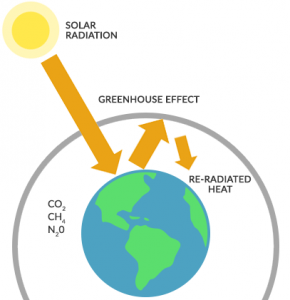
I’ve got good news and bad news. Because greenhouse gases trap heat in the atmosphere, this helps regulate temperature. Without greenhouse gases, we’d live in an icebox.
Now, the bad news. Because we put too much of it in the air, it amplifies the greenhouse effect and less solar radiation is radiating back to space.
Too much of a bad thing can leave everlasting consequences for our planet.
60. Trees grow from the top down
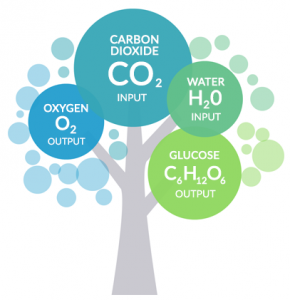
For the most part, trees grow using carbon dioxide and rain from the atmosphere. Plants use sunlight to undergo photosynthesis.
Then, it produces sugars to create the trunk and other structures of the tree. The nutrients that plants get from soils mostly aren’t used as part of the main body and structure of a tree.
Plants use these nutrients for the more complex structures within plants, such as functional proteins and enzymes. This means that most of the dry mass of trees is made from the contents of the air.
61. Gas burnt in your car ends up in plant material

When your car burns gasoline, the fossil fuels are released into the air as carbon dioxide and water vapor. The air pollution stays in the atmosphere for a while, but eventually plants consume it during photosynthesis.
So that same weight from the tank of gasoline gets converted into wood or plant material by photosynthesis.
Given how many cars are being driven daily, plants have access to plenty of “material” for their growth. They just need the ideal conditions to grow.
62. Life evolves on Earth
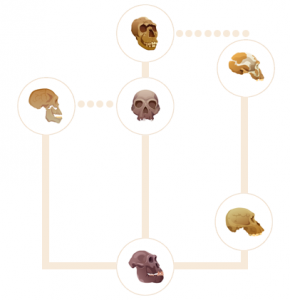
In flesh and blood, you have been genetically fine-tuned as a product of natural selection. Without evolution, there would be no biodiversity hotspots like tropical rainforests.
This is because life evolved in some of the toughest conditions like an overabundance of water and nutrient-deficient soils. Over time, plants, animals and fungi have developed immunity to harmful bacteria and viruses from these harsh conditions.
This is because whatever doesn’t work just doesn’t survive. Evolution does the work. This is why we find some of the most resistant chemicals for medicine in tropical rainforests.
63. Dinosaurs dominated for 160 million years

Think about it. For 160 million years, dinosaurs dominated the land. Today, we unearth dinosaur fossils of unfathomable size. The theory is that gigantism correlates with oxygen levels in the atmosphere.
Higher oxygen levels meant more size and mass. There is varying opinion on oxygen levels during the age of dinosaurs. Regardless, these reptile-like mammals grew to an extraordinary size.
Ultimately, the demise of dinosaurs was a 6-mile-wide asteroid known as the Cretaceous–Paleogene extinction event. Temperatures began to plummet because a dust cloud blocked the sun.
64. Mass extinctions are common in nature
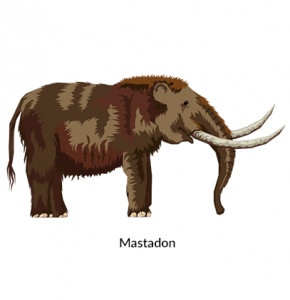
Earth has experienced 5 mass extinctions. More than 99% of species that existed are now extinct. Time and time again, the reign of a species has fallen with an abrupt ending.
For example, ocean/atmosphere chemistry, climate change, volcanic activity, and meteor/asteroid impacts had fatal consequences. No matter how far back you look, nature has found its way to reshuffle the deck.
Large mammals are at greater risk. For example, giant sloths, mastodons and saber-toothed tigers became extinct only about 10,000 years ago. They just couldn’t find a way to outmuscle nature.
65. The supercontinent cycle
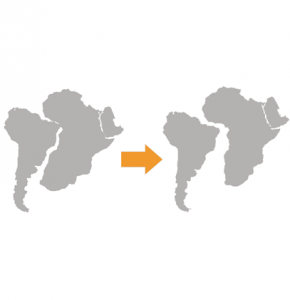
The land beneath our feet is in motion. We know this is true because we measure their movements using global positioning satellites.
On average, continents move about 1 inch per year. Plate tectonics drive the reshaping of continents. Inch by inch, this accounts for incredibly long distances over millions of years.
Long ago, cratons merged to create vast stretches of land. For example, Vaalbara, Ur and most recently Pangaea (sometimes spelled Pangea) took part in the supercontinent cycle.
66. Supercontinents and superoceans
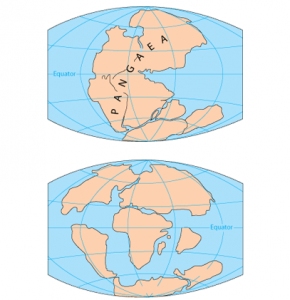
One continent. One ocean. If you had a time capsule and traveled back in time 200 million years ago, you’d experience Earth as one of the supercontinent of Pangaea.
From coast to coast, Pangaea was surrounded by the superocean Panthalassa. Gradually, continental drift tore the supercontinent apart into our current placement of continents.
Today, we pick up the pieces and look at the clues of Pangaea. For example, notice the striking similarities of continental boundaries aligning in a world map.
67. Dinosaur fossils from Pangea
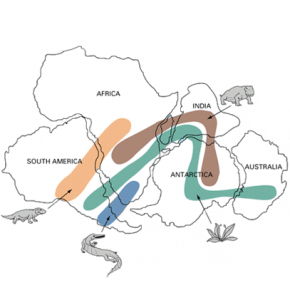
Dinosaurs lived on the supercontinent of Pangea for over 160 million years. Plate tectonics was the mechanism that eventually tore continents apart.
We know this because we can find the same fossils on separate continents today. We see fossils of the same land herbivores today on separate continents that couldn’t fly or swim.
The reason is that they lived on Pangaea and over time it separated. To this day, scientists have kept a thorough record documenting each fossil discovery.
68. The geologic time scale
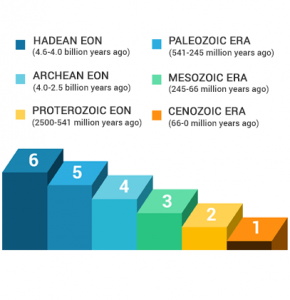
The geologic time scale of Earth is almost unimaginable to us. This is because human lifespans are so short in comparison.
We work in hours, days, months, and years. But the Earth works in decades, centuries, and millions of years.
Like chapters in a book, geologists partition Earth’s history into periods, eras and epochs. Each block of geologic time has a notable start and end. So that means that timing is everything when it comes to the geologic time scale.
69. Meteorites date the Earth as 4.5B years old
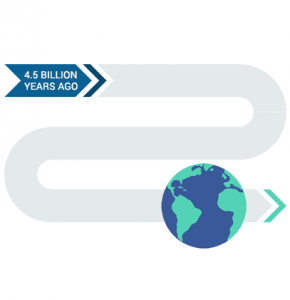
Geologic time seems to be a Goliath that many of us David earth scientists wrestle with. Earth is a staggering 4.5 billion years old.
Despite the challenges of grappling with geologic time, we can come up with a decent estimate of Earth’s age by studying meteorites.
Meteorites are remnants from when all the planets were forming. Some of them still land on the planet today. By dating meteorites, we find that the oldest rocks are often 4.5 billion or so years old.
70. Carbon dating uncovers age
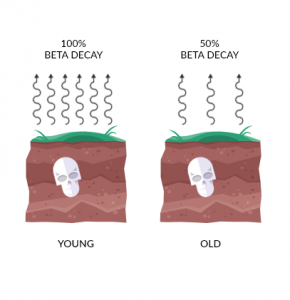
All life contains different types of carbon. When an organism dies, carbon-14 (C14) breaks down. However, carbon-12 (C12) doesn’t break down.
By examining the ratio between the two for dead matter, we can estimate age with carbon dating. But there are limitations to measuring beta decay.
At a certain age (60,000 years or so in history), there isn’t enough carbon-14 that remains from the organism to make an accurate estimate.
71. The Grand Canyon reveals Earth’s age
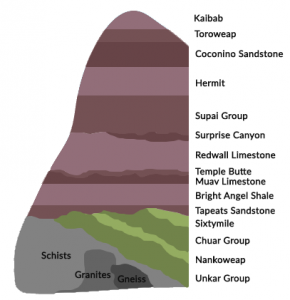
Rocks tell us about colliding continents, meandering streams and volcanic eruptions. In the case of the Grand Canyon, the multi-layered strata provide insight to the age of the Earth.
Like a stack of pancakes, younger rock layers pile on top of older layers. We use the law of superposition to reveal Earth’s age. For example, the base of the Grand Canyon is Precambrian basement rocks.
These were formed from flowing magma which cooled and hardened about 1.8 billion years ago. Most of the rocks on top are sedimentary like shale, limestone and sandstone.
72. Magnetic pole reversals
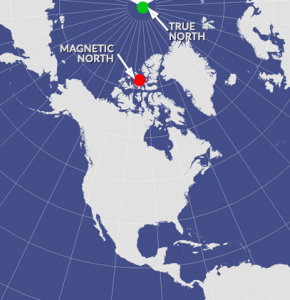
The Earth is one big magnet. This is why when you use a compass, it points to the magnetic north. But north didn’t always point northward.
On average, it takes 250,000 years for Earth’s magnetic north to flip polarity. As shown in rocks, magnetic pole reversals are one of the key gateways to recognizing the past.
On average, pole reversals occur every 200,000 to 300,000 years. We may be due for one soon.
73. Planetary (Chandler) Wobbles
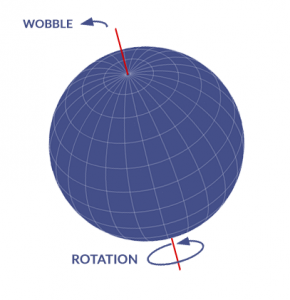
Earth spins on its axis of rotation. But it doesn’t spin perfectly. Like a toy top, it wobbles when it spins. This displacement is known as the Chandler wobble.
Precession occurs because the Earth is not a perfect sphere. It flattens out at the poles. But the Chandler Wobble actives a wobble that is minuscule.
It’s just 20 feet in deviation at the North Pole. No longer a mystery, the key driver of wobbling is temperature and salinity changes at the bottom of the ocean.
74. Ice ages are periodic
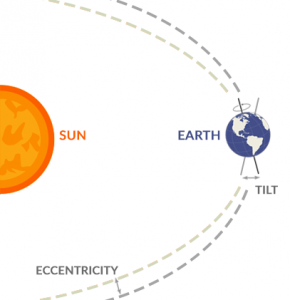
Earth revolves around the sun in a roughly circular orbit. But roughly every 200,000 years, its orbit becomes more eccentric from gravitational interactions.
It’s close to circular now. But like a pendulum, the eccentricity will swing back the other way. It’s because Venus is so close and Jupiter is so large that gravity affects its orbit.
There’s been a noticeable trend in climate, temperature and seasons due to the Milankovitch cycle.
75. Earth was a snowball
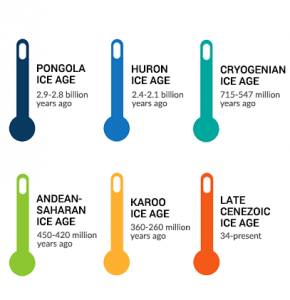
Earth experienced 5 large ice ages. During this time, a hefty layer of ice smothered our planet. It was unimaginably frigid at this time where temperatures dropped to 10°C lower than it is today.
Ice ages happen for several reasons. In the eyes of Milankovitch, Earth is prone to ice ages because of how its cyclical movements affect climate.
At least, this is reasonable to assume for the last ice age 10,000 years ago. Atmospheric chemistry, solar output and ocean currents can trigger ice ages.
76. Glaciers chisel away the land like a rake
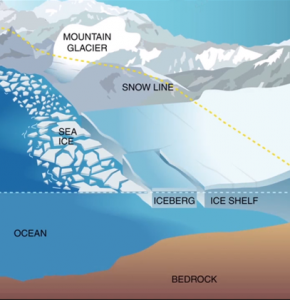
Like a rake scraping the dirt, glaciers leave a lasting impression on the land. During the last ice age, glaciers scraped away rock in Canada dumping most of it the northern United States.
They tore mountains down carrying a vast amount of rocks from the continent across the border. Continental glaciers chisel away at the land leaving its fingerprint in the land.
For example, Long Island, New York is the result of glacial debris from the sediment dumping of a glacier terminal moraine.
77. Continents are still rebounding from the last ice age
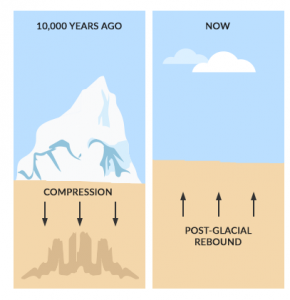
Only about 10,000 years ago, ice covered all of Canada. Mountains made of ice pushed down on the continent with immense pressure. For example, the Hudson Bay may have depressed over one kilometer.
After the ice melted, Canada began lifting. We know this because we measure its vertical motion with GPS. Imagine squeezing a sponge and watching it return to its shape.
Similarly, isostatic rebound is quick at first, then slows down. This process of glacier rebound is due to the asthenosphere behaving in a fluid manner. Because ice had been removed, the compressional force no longer exists.
78. Humans have only explored 20% of oceans
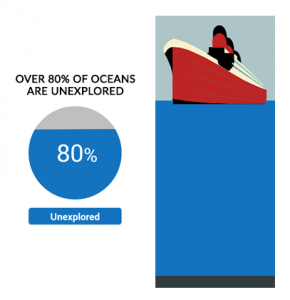
We’ve mapped 100% of our oceans at 5 km resolution using satellite radar. If you account for shipping routes and scientific expeditions, we’ve mapped out about 20% of ocean bathymetry with sonar.
So that means we have oceans mapped at about 100 meters resolution which is the same as our surface maps of Venus and Mars. The other 80%? The reality is that most of our oceans are totally untouched. Even though 70% of Earth is covered by oceans, we know little about our ocean seafloor.
Despite the need to understand ocean CO2 sequestration, nutrient recycling, and untapped energy resources, the biggest drawback is the high cost of exploring oceans.
79. The Earth is breathing
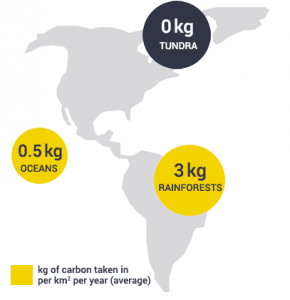
The Earth is breathing. We gauge Earth’s metabolism based on the rate at which plants absorb carbon dioxide out of the atmosphere.
Net primary productivity is how much carbon dioxide is taken in during photosynthesis minus how much is given off during respiration.
For example, lush tropical rainforests are the most productive places on the planet. But tundras are the least productive because little photosynthesis takes place in polar regions.
80. Climate feedback loops
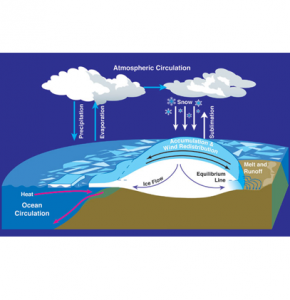
Climate feedback loops either amplify or reduce climate change. For example, a warmer climate could increase cloudiness because of the increased water vapor in the atmosphere.
Because clouds reflect ⅓ of incoming solar radiation, more clouds could slow the increased warming from less heat absorption. This is an example of a negative feedback loop.
An example of a positive feedback loop is the melting of permafrost. This amplifies climate change because its methane contents would be released into the atmosphere.
81. Watersheds are like upside-down umbrellas

Everyone lives in a watershed. This is because when it rains, it drains into a catchment basin.
Think of a watershed like an upside-down umbrella. The canopy catches water to eventually end up at the lowest depression.
These depressions are often well-connected networks of tributaries. They zig-zag all the way to a main body of water like a river or lake. That means everything upstream ends up downstream.
82. Salinity in oceans

Imagine you’re stranded on a raft in the middle of the ocean. All this water. But no fresh water to drink. Oceans are salty because runoff transports minerals and salts from the surface.
When the ocean evaporates from heat, salt remains in the ocean, and water rises. Even though rainwater wakes minerals and salts into rivers and lakes, they are mostly freshwater.
This is because their minerals get washed away and transported to an outlet at the nearest ocean. So unlike the high salinity we find in oceans, lakes, and rivers constantly have the minerals washed away.
83. Deltas are fertile and often overcrowded

Streams and rivers drain into an ocean or lake carrying sediment. Deltas begin to form when they carry too much sediment and clog the entrance into the basin.
At this point, the stream loses energy because of the increased sediment deposits. This forces the basin entrance to widen forming a delta. Deltas take different shapes.
If you have too many sediment deposits, a feature like a bird-foot delta forms. When it floods, sediments spread across the region. When water recedes, soils are rich and fertile for agricultural purposes.
84. Soil formation from weathering
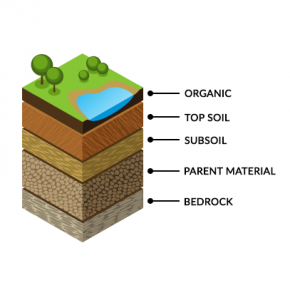
Let’s start with a big boulder on the ground. Then, let it sit for thousands of years. Eventually, it will break down and form into soil. This is mostly due to the percolation of water dissolving rocks.
That’s why from top to bottom, soils get rockier further down. But other types of weathering can peel away at rock as soil formation factors.
Most importantly, soil differs geographically. For example, tropical rainforests have a thick pedosphere because of the abundance of rain in this region.
85. The Nitrogen cycle from the air to soil

Nitrogen makes up about 78% of the air. Plants and animals need nitrogen to make proteins but they cannot take it in from the air. Because nitrogen is unreactive as a gas, it has to be transformed into a new molecule.
When bacteria in the soil take nitrogen from the air, it becomes nitrates and can move through the food chain. For example, legumes like clovers, peas, and beans, their roots can take N2 from the air and transform it into another form called nitrates.
In addition, lightning transforms N2 into NO2, which goes into the soil to form nitrates. Also, synthetic fertilizer from farming can bring nitrate to the soil.
86. Lighting strikes 8.6 million times per day.
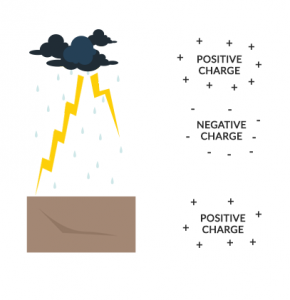
When you rub your feet on the carpet, you build a slight negative charge.
You get a shock because you discharge the static electric charge to a positively charged object. Similarly, lightning is an electrostatic discharge that is supercharged from ionized air.
Lightning always finds the fastest route to Earth. By releasing a massive bolt of electricity, lightning is hotter than the sun when it strikes. Lightning strikes 8.6 million times a day. It helps in the production of ozone and nitrogen fixation.
87. Nutrient cycle – From inorganic to organic
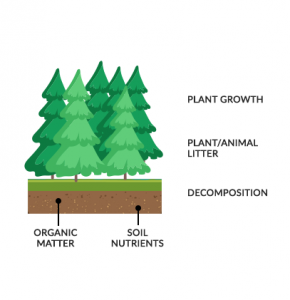
Food for thought, the nutrient cycle is constantly exchanging inorganic and organic matter back and forth in an environment.
Because Earth is a closed system, nothing is taken out or in. It’s just recycled back and forth. First, plants uptake nutrients from the soil to grow. Then, animals consume plants and make waste. Eventually, plants die and decay becoming litter in the soil.
Decomposers break it down so it can be recycled to be part of the food chain again. This vital process releases nutrients and replenishes the soil keeping the nutrient cycle in balance. This process of production and decomposition is deep-rooted and is the lifeblood in fully functional ecosystems.
88. Nutrient-deprived soils
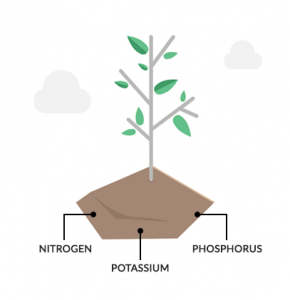
It’s true that plants grow from the top down. In other words, it uses water and carbon dioxide from the air to grow. But nutrients like nitrogen (N), phosphorus (P) and potassium (K) are key elements for plant growth.
If you deplete the soil from these nutrients, this deprives the plants from growing. For example, this is an ongoing problem for farming and tree harvesting areas.
This is why farmers rotate crops and allow periods of rest or “fallow” to replenish soil with nutrients. In addition, farmers use chemical and natural fertilizers to replace nitrogen which is leached from the soil by growing plants or runoff into streams.
89. Koppen climate classification
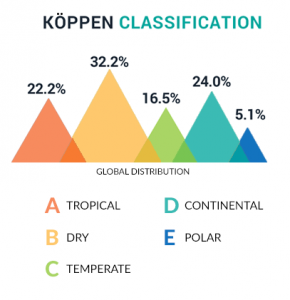
The Koppen climate classification is the most widely used system to catalog our environment.
In the eyes of Koppen, Earth consists of 5 climate types – tropical, dry, temperate, continental, and polar. Dry climates are characterized by having a shortage of water.
While polar climates endure frigid temperatures (-10 °C), tropical climates sustain a healthy portion of high temperatures (+18 °C). Temperate climates take the middle road for average temperature. Finally, continental climates are usually situated in the interior of continents.
90. Resilient ecosystems from biodiversity
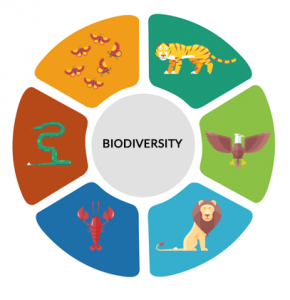
Biodiversity or “biological diversity” refers to the variety of species and genetic diversity in an ecosystem. Ecosystems rely on biodiversity for resiliency, health, and food.
A loss in biodiversity is like a soccer team without a defense. If you lose specific habitats like wetlands, grasslands, and forests, then you threaten biodiversity. It’s from the richness in species that we can derive certain pharmaceutical products.
For example, 1/4 of the drugs we commonly use today were originally derived from plants. Most of these were discovered in rainforests where biodiversity is immense.
91. Coral reefs as biodiversity hotspots
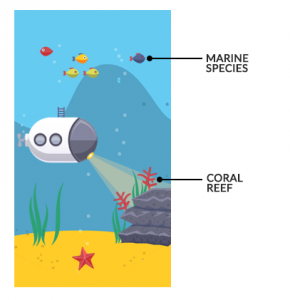
For ocean life, coral reefs are biodiversity hotspots. Remarkably, about 1/4 of marine species reside in coral reefs.
These are like the rainforests of the oceans. From an environmental standpoint, there’s been a race to protect them. Not only does overfishing threaten coral reef health, but stress from rising temperatures, ocean acidity even sunscreen can harm coral reefs.
Scientists argue that coral reefs face extinction in 50 years. So the spotlight is on coral reefs. For example, replanting is just one way scientists are restoring these underwater biodiversity hotspots.
92. The food chain and you
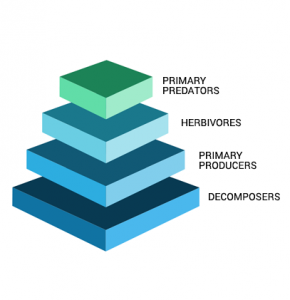
All living things rely on each other because they are part of the food chain.
At the bottom of the food chain, plants are natural producers and provide food and nutrients to consumers. Herbivores nourish plants and insects. Then, predators prey on herbivores or other predators.
When an animal dies, scavengers and decomposers break them down. Afterward, it can be recycled to be part of the food chain again.
93. Your body is 90% bacteria
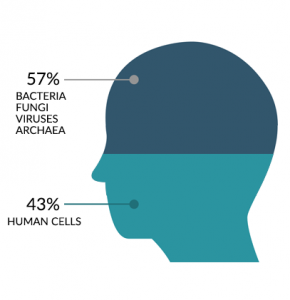
By 10 to 1, colonies of bacteria outnumber your human cells. In other words, we are borderline bacteria. But there shouldn’t be a negative connotation to this.
Bacteria are instrumental in breaking down sugars, digesting food, and protecting against infections. And the reason is that your body functions best by evolving with both human cells and bacteria.
You wouldn’t be who are you today if it wasn’t for the underappreciated bacteria.
94. Humans have existed for <1% of Earth’s history
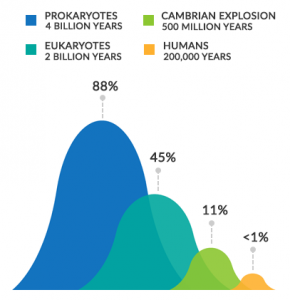
Earth was a lonely place for most of its history. If you hold out your arm and clipped a fingernail, that’s less than the duration that humans have existed in Earth.
The earliest modern human fossil found was dated to be about 200,000 years old. Humans migrated and spread throughout the continents.
Like an insurance policy, this helped prevent humans from extinction during cold spells. But our distinct advantage was our enormous brains and ability to communicate.
95. We are made of stardust
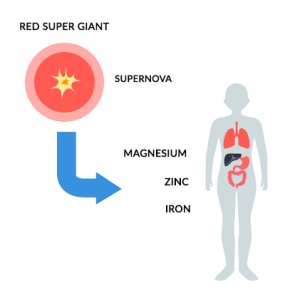
At the start of the universe, the Big Bang created all the hydrogen and helium in the universe. Afterward, all the heavier atoms were made during a supernova.
This is the dying last stage of a star when the star explodes. Heavier elements like copper and zinc get flung out into space.
We find these elements in our bodies and the food we eat. So that means we are composed of bits of old supernova and cosmic dust.
96. Energy conversion through cellular respiration
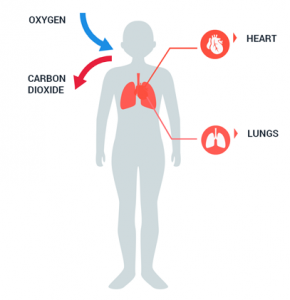
The single most important biochemical reaction human beings need is cellular respiration. Without it, we wouldn’t exist. Our cells require oxygen to break down the food we consume.
From glucose and oxygen, cellular respiration is the mechanism that gives us the energy we need to live.
All the chemical reactions in living things run off ATP. Basically, sugars, fats, and proteins turn into ATP which is the usable form of energy for biological systems like ours.
97. 8 billion humans live on Earth and counting

In flesh and blood, 8 billion humans call Earth their home. The emergence of humans has left a profound impact on the planet.
We customize our environment by erecting cities, chopping down forests, and altering the chemical makeup of the atmosphere.
Unequivocally, humans are transforming the landscape at an unsustainable rate.
98. The greatest gift for your children
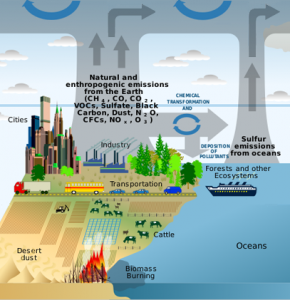
97% of scientists agree that humans are causing recent climate change. For example, the evidence includes rising sea levels, warming oceans, and shrinking ice sheets.
Like a one-man wrecking ball, humans emit methane, carbon dioxide, and aerosol greenhouse gases. These are the heavy hitters that continue to fill the air at unprecedented rates.
Overall, we need a new strategy. Not wishful thinking.
99. Sea levels constantly change

As temperatures surge, sea levels rise with it. This is because melting ice sheets and glaciers add to total water volume.
Scientists estimate the sea level will rise 32 to 68 inches by 2100. This rise in sea levels could swallow parts of coastal cities like Shanghai, Olympia, and New York. How do we slow down the massive supply of water?
First, we reverse deforestation to capture more carbon from the atmosphere. Second, we reduce greenhouse gas emissions to help stabilize temperature. Finally, we all have to consider the environment in our daily lives.
100. Earth will be fine
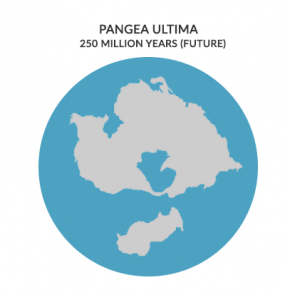
Earth is on autopilot. It has the potential to support life for over a billion years longer.
Eventually, continental drift will assemble another supercontinent called Pangaea Ultima. The universe’s age is 13.7 billion years ago. Stars will continue to form for another 100 trillion years.
We talk about terraforming Mars. But we can’t even take care of our own. In a game of cat and mouse, the clock is ticking. Just like 99% of species that ever existed, we’re not extinction-proof. Earth will be fine. But we won’t.

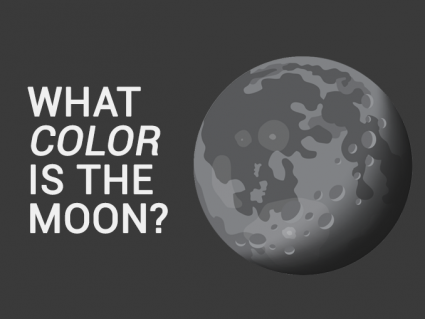
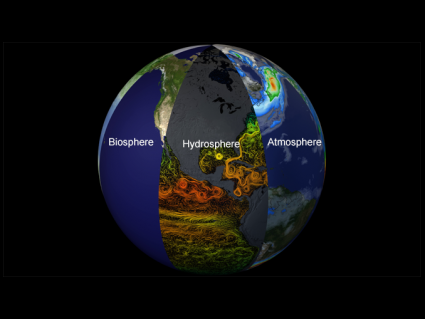
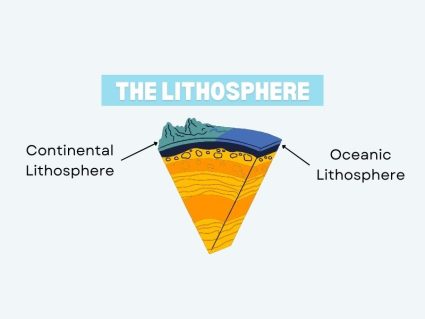
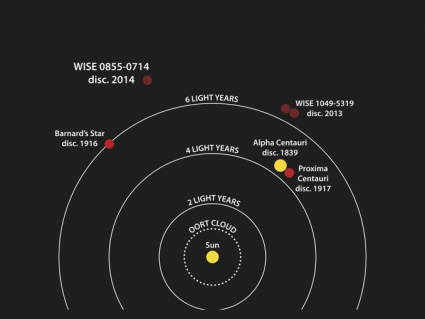
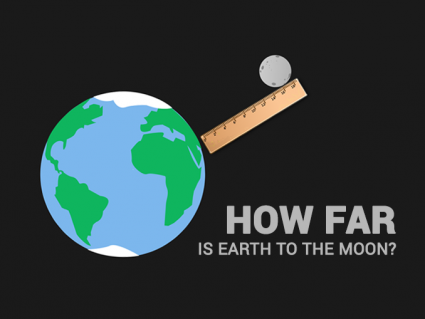
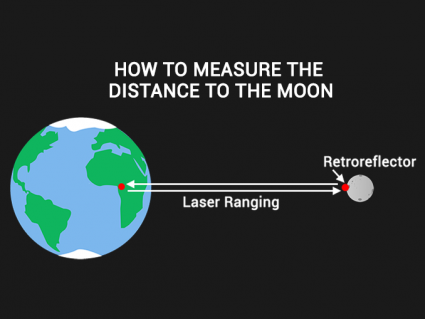
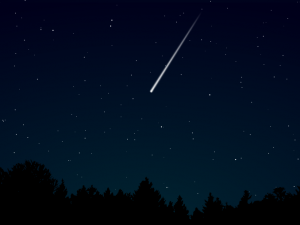
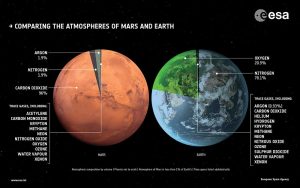
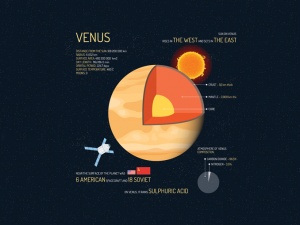
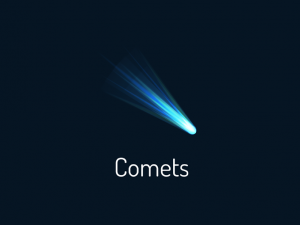
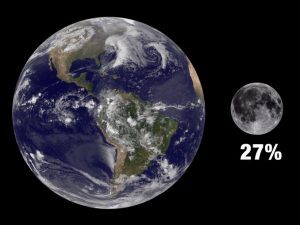
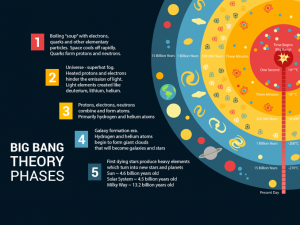
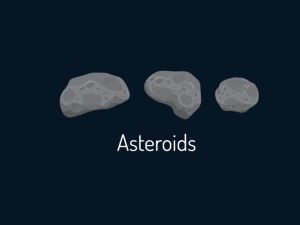
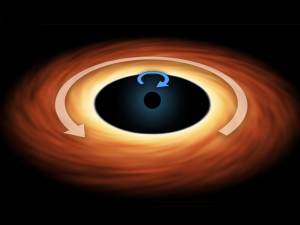
Good info
I read all the facts and learned so much. I was trying to get information for a project and I think I got more than enough. THANKS
I’m a teacher, I’d like to congratulate for the very cool content. The website is precise, clear and fun for students to read!! Thanks
This helped me with a project, I needed a whole page of facts about earth, I just had to Google how many people were actually on earth.
this was good information!!?
This helped me with a project thank you bro!
I love your info!! Keep up the good work!!
way too long
writing a story about Earth ? now.
Amazing
I like it and I did not know all of this.
I like all the 100 facts about Earth.
Cool!!! So short but so excellent and impressive!
Very good information. I like it
Thank you people who made this. It helped me for my project.
This is very interesting
This is good information. Thank you for taking the time to do this.
It helped me ??
Super helpful, I was working on a project and this gave me so much more info than I thought
This was very helpful?
I love Earth!!!
This helped me with some of my work, I have to make a board game in science about astronomy, and it really helped.
I already knew about all of this and I’m in 5th grade.
It helped me with my homework
One mistake the population is over 8 billion but I ❤️ It
I was scared by how sea levels rise cuz I live right next to the Pacific Ocean. But great information
Nice, it helped me with a project
It’s so good
I love it <3
Good information ?